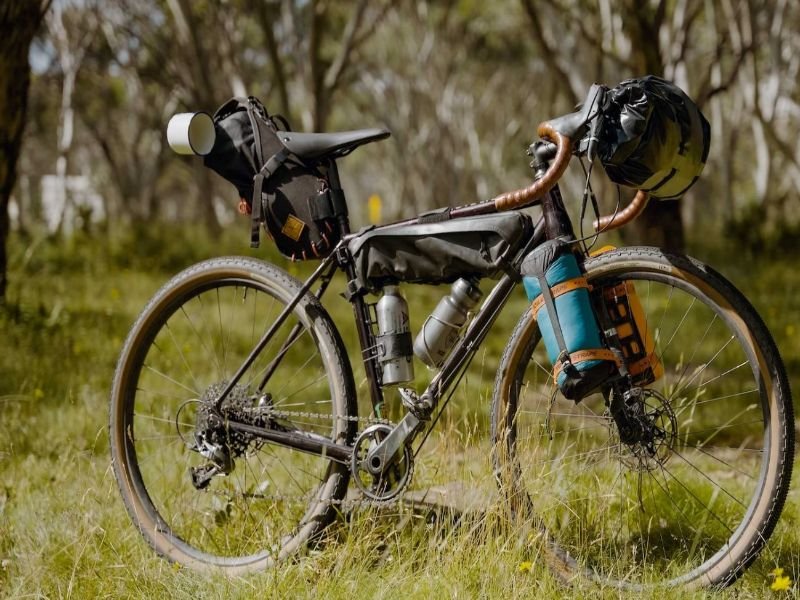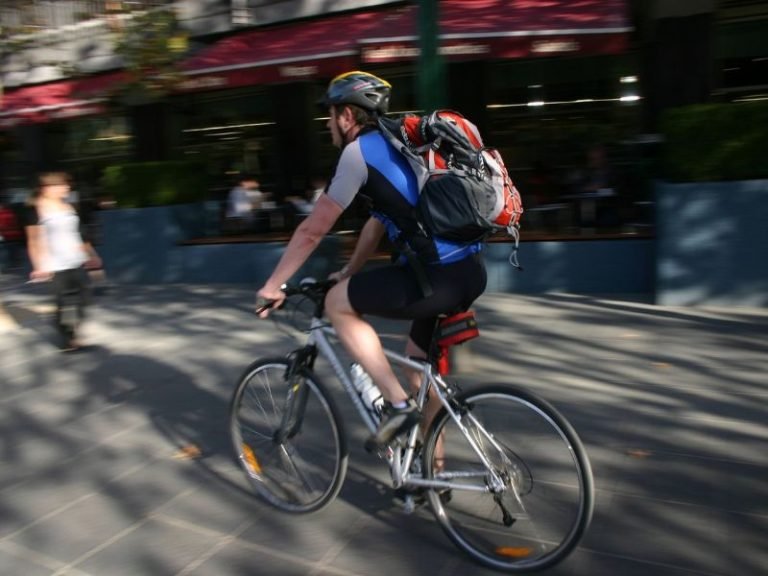How to Pack for a Bikepacking Adventure
Plan the ultimate bikepacking adventure with confidence. Learn how to pack for a bikepacking adventure with our comprehensive guide. Discover essential gear, packing tips, and organization strategies for your next cycling expedition.
Bikepacking is a thrilling outdoor adventure that combines the freedom of cycling with the spirit of backpacking. Unlike traditional cycling, bikepacking involves traveling long distances off-road, often through rugged terrains and remote wilderness areas.
It’s a self-sustained journey where riders carry all their essential gear and supplies on their bikes, making it a unique and challenging way to explore the world.
How to Pack for a Bikepacking Adventure
Proper packing is the cornerstone of a successful bikepacking adventure. Your ability to carry everything you need efficiently and securely will determine how enjoyable and safe your journey will be.
Over-packing can slow you down and make your bike harder to handle while under-packing might leave you ill-prepared for unexpected situations.
Therefore, understanding the art of packing is crucial for a memorable and worry-free bikepacking experience.
In this comprehensive guide, we’ll walk you through the entire process of preparing for a bikepacking adventure.
From choosing the right destination to packing your bike and ensuring safety, each step is essential to your overall enjoyment and well-being during your journey.
Planning Your Bikepacking Adventure
Choosing a Destination
Selecting the perfect destination for your bikepacking adventure is the first step in the planning process.
Consider factors like your skill level, the terrain you want to explore (mountains, forests, deserts, etc.), and the level of solitude you desire.
Research potential routes, national parks, or trail systems that align with your preferences and abilities.
Determining the Duration of Your Trip
The duration of your bikepacking adventure will impact your gear choices and the amount of supplies you need to carry.
Decide whether you’re embarking on a weekend getaway, a week-long expedition, or an extended journey. Longer trips require more meticulous planning, including food and water resupply points.
Researching the Terrain and Weather Conditions
Understanding the terrain and expected weather conditions of your chosen route is paramount. Different terrains demand various bike setups and gear choices, while weather can drastically affect your safety and comfort.
Essential Biking Gear for Rainy Days
Use reliable sources to gather information about elevation changes, trail conditions, and typical weather patterns for the time of year you plan to travel.
Creating a Budget
Bikepacking can be as affordable or as extravagant as you make it. Create a detailed budget that includes expenses like gear, bike maintenance, food, accommodation (if needed), and any permits or fees associated with your chosen route.
Sticking to a budget will help you make informed decisions throughout your adventure.
Selecting the Right Gear
Choosing a Suitable Bike
If your adventures take you off the beaten path and into rugged, off-road conditions, then a mountain bike is the ideal choice, as it excels in such demanding environments.
On the other hand, if you anticipate encountering a variety of surfaces, including gravel roads, then a gravel bike offers the versatility required to handle mixed terrains.
Biking Accessories for Bike Commuters
For those planning long-distance journeys on well-paved roads and meticulously maintained paths, touring bikes are specially designed to provide the comfort and endurance necessary for such endeavors.
Bike Maintenance and Repairs
Before you hit the trail, ensure your bike is in top-notch condition. Check tire pressure, brakes, gears, and lubricate moving parts.
Carry essential bike repair tools, like tire levers, patch kits, a multi-tool, and spare tubes, to address any unexpected issues.
Essential Gear and Equipment
- When it comes to gearing up for your outdoor adventure, it’s crucial to make thoughtful choices.
- Choose lightweight and compact shelter options like tents, hammocks, or bivvies that suit your preferences and the expected weather conditions.
- High-quality sleeping gear is essential for a restful night’s sleep. Look for a high-quality sleeping bag that offers warmth and insulation while keeping weight in check. Pair it with an inflatable sleeping pad for added comfort.
- Dress in layers to adapt to changing weather conditions. Include moisture-wicking base layers, insulating mid-layers, and waterproof outer layers. Don’t forget rain gear to stay dry in wet conditions.
- Carry maps of your route, a GPS device or smartphone with offline maps, and a compass for backup navigation.
- Choose a lightweight and efficient stove system, along with compact cookware for preparing meals. Also, plan your meals and carry lightweight, calorie-dense food. Use water purification methods like filters or purification tablets to ensure safe drinking water.
- Assemble a comprehensive First Aid kit and carry essential bike repair tools, including spare parts specific to your bike.
- Keep personal hygiene items to a minimum, and carry identification, emergency contact information, and relevant permits or licenses.
Packing Principles
Consider your personal preferences and the demands of your trip when deciding between ultralight and traditional packing. Ultralight gear reduces weight but may sacrifice some comfort.
Place frequently used and critical items within easy reach. Ensure essentials like water, food, and navigation tools are readily accessible.
Balance the weight between the front and rear of your bike to maintain stability and control. Store heavy items low and centered to prevent an unbalanced load.
Organizing Your Gear
Packing Strategy
A well-thought-out packing strategy is good for a seamless and enjoyable journey. The convenient storage options make it easy to access essential items when and where required.
You can use handlebar bags and front racks to carry lightweight and bulky items like your sleeping bag or tent.
The use of frame bags that fit within the main triangle of your bike frame is also handy. These are ideal for storing dense items like tools, food, and clothing.
For heavier items, such as gear that needs to be securely fastened, rely on seat bags and saddle packs.
Properly Securing Your Gear
Utilize straps and bungee cords to secure gear to your bike’s frame and racks securely. Double-check their tightness to avoid items shifting during your ride.
Invest in waterproof bags or covers for essential items like clothing, sleeping gear, and electronics to protect them from rain and moisture.
Creating an Inventory Checklist
Develop a comprehensive checklist of all the items you plan to take, divided into categories like gear, clothing, food, and personal items. This checklist will help you pack efficiently and ensure you don’t forget crucial items.
Packing Your Bike
Step-by-Step Packing Process
Place the heaviest items, such as your cooking equipment and food, in low and centered positions on your bike to maintain stability.
Distribute weight evenly between the front and rear of your bike to prevent excessive front-end or rear-end weight bias.
Use padded or protective cases for fragile items like your camera or electronics to prevent damage during rough rides.
Ensuring a Secure Fit
Double-check that all straps and bungee cords are tightly secured. Shake your bike gently to ensure that nothing is loose or wobbly. A secure fit is essential for safe riding.
Testing the Load for Stability and Balance
Before hitting the trail, take your loaded bike for a short test ride to evaluate its stability and balance. Make any necessary adjustments to ensure a comfortable and safe riding experience.
Adjusting and Fine-Tuning
Bike Fit Adjustments
Adjust your saddle height and position for optimal comfort and pedaling efficiency. Ensure your bike fit is dialed in before embarking on your adventure.
Fine-tune your handlebar height and angle to reduce strain on your wrists and back during long rides.
Gear Accessibility
Keep frequently used items like snacks, water, and navigation tools within easy reach to minimize the need to stop and unpack during your ride.
Ensure that your emergency gear, such as a first aid kit or repair tools, is easily accessible in case of unexpected situations.
Safety and Precautions
Reviewing Safety Guidelines
Familiarize yourself with safety guidelines specific to bikepacking and the area you plan to explore. This includes understanding wildlife encounters, potential hazards, and emergency procedures.
Checking Emergency Communication Devices
Carry reliable emergency communication devices such as a satellite phone or a personal locator beacon (PLB) to call for help in remote areas without cell reception.
Leaving an Itinerary with Someone
Before departing on your bikepacking adventure, share your trip itinerary with a trusted friend or family member. Provide details of your planned route, estimated return date, and emergency contact information.
Adhering to Leave No Trace Principles
Respect the environment by following Leave No Trace principles. Minimize your impact on nature, pack out all waste, and leave the wilderness as pristine as you found it.
Biking Tours for Nature Enthusiasts
To conclude, properly packing for a bikepacking adventure involves careful planning, gear selection, and organization. Ensuring a secure fit, balancing weight, and fine-tuning your bike and gear are essential for a successful trip.
With your bike expertly packed and all safety precautions in place, you’re ready to embark on your bikepacking adventure.
Enjoy the thrill of exploring new terrains, connecting with nature, and experiencing the freedom of self-sustained travel.
Remember to stay safe, be prepared, and savor every moment of this unforgettable journey.







